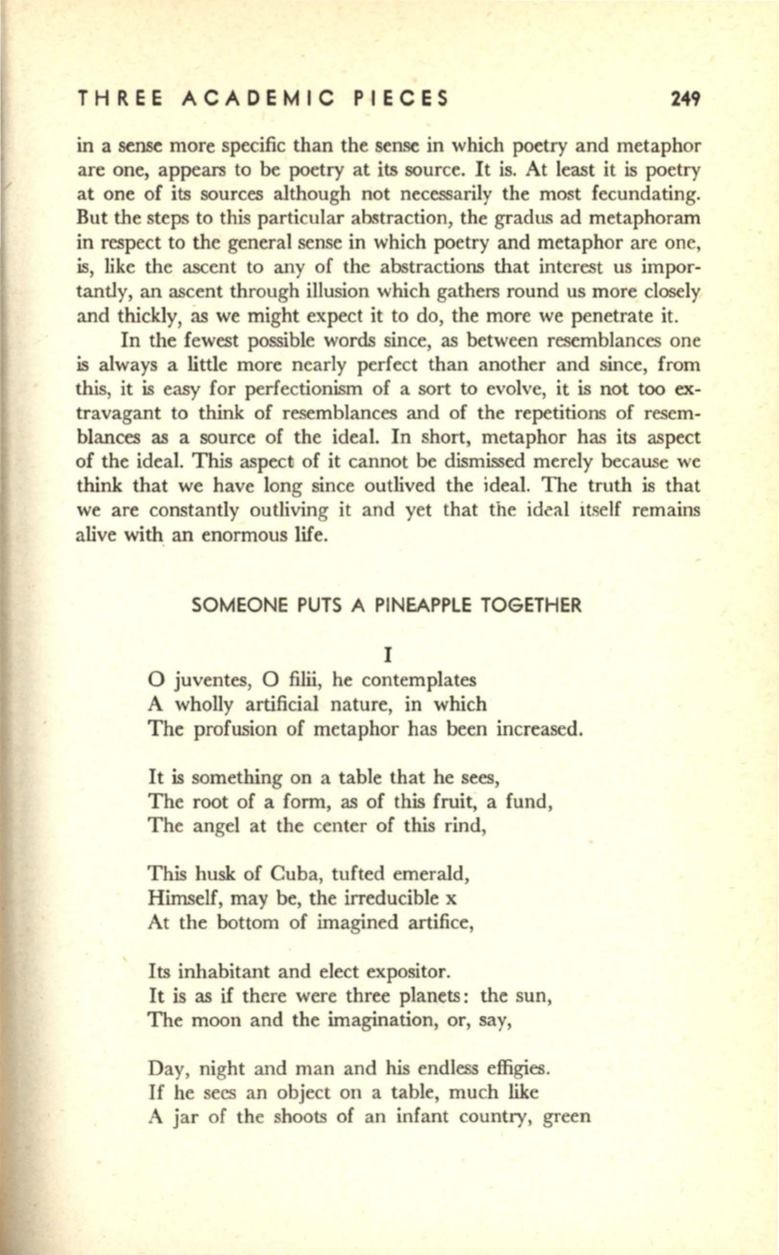
THREE ACADEMIC PIECES
249
in a sense more specific than the sense in which poetry and metaphor
are one, appears to be poetry at its source. It is. At least it is poetry
at one of its sources although not necessarily the most fecundating.
But the steps to this particular abstraction, the gradus ad metaphoram
in respect to the general sense in which poetry and metaphor are one,
is, like the ascent to any of the abstractions that interest us impor–
tantly, an ascent through illusion which gathers round us more closely
and thickly, as we might expect it to do, the more we penetrate it.
In the fewest possible words since, as between resemblances one
is always a little more nearly perfect than another and since, from
this, it is easy for perfectionism of a sort to evolve, it is not too ex–
travagant to think of resemblances and of the repetitions of resem–
blances as a source of the ideal. In short, metaphor has its aspect
of the ideal. This aspectJ of it cannot be dismissed merely because we
think that we have long since outlived the ideal. The truth is that
we are constantly outliving it and yet that the ideal itself remains
alive with an enormous life.
SOMEONE PUTS A PINEAPPLE TOGETHER
I
0 juventes, 0
filii,
he contemplates
A wholly artificial nature, in which
The profusion of metaphor has been increased.
It is something on a table that he sees,
The root of a form, as of this fruit, a fund,
The angel at the center of this rind,
This husk of Cuba, tufted emerald,
Himself, may be, the irreducible x
At the bottom of imagined artifice,
Its inhabitant and elect expositor.
It is as if there were three planets: the sun,
The moon and the imagination, or, say,
Day, night and man and his endless effigies.
If
he sees an object on a table, much like
A jar of the shoots of an infant country, green


